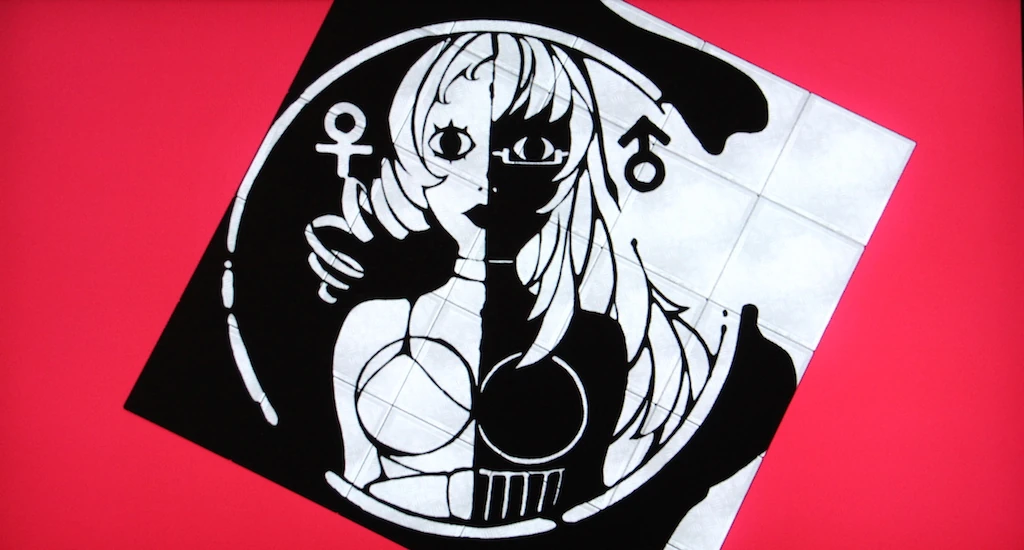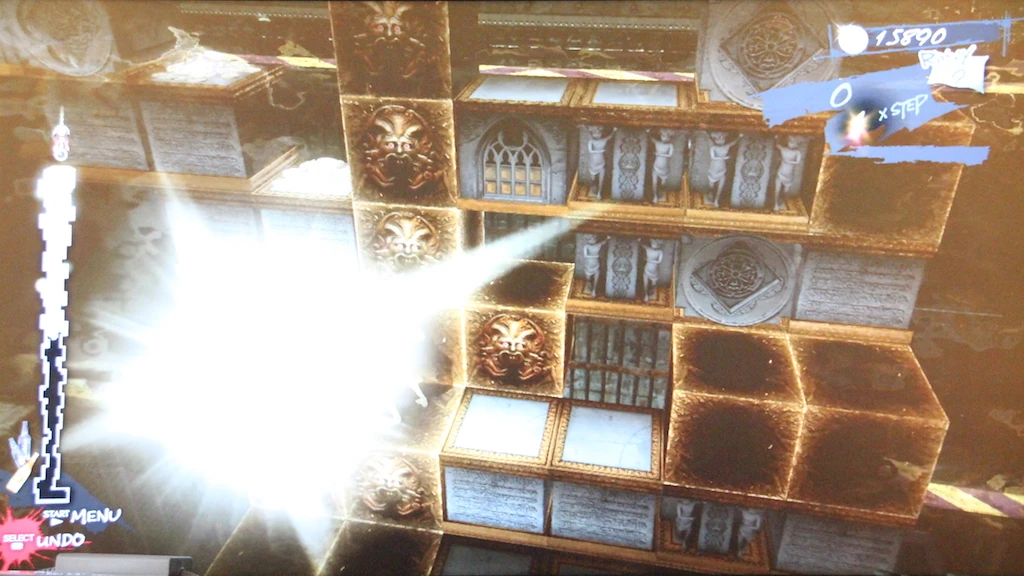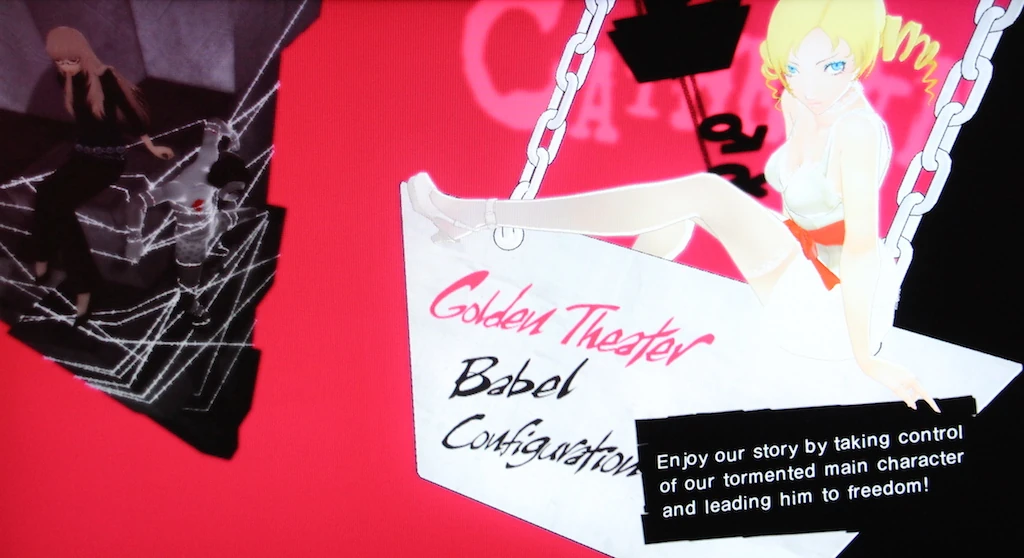Problem solving in Catherine and how the interface design decisions influence player performance affect the player experience
- Graphic effects hide the action the player needs to see
- Camera movements focus on the wrong information
- Interesting decisions and social psychology

Catherine is a game about problem solving. Players need to learn techniques, chunk them to remember them easily and detect patterns in the environment to know when to use which technique to progress in the game. Repetition also leads them to over-learning : techniques become automatic and allow the player to be faster and to reach higher awards as he masters the game mechanics and execution.
To solve problems, players should see its components and only them
Graphic effects hide the action the player needs to see
 When tutorials aren’t preventing the player to complete the action they were in the middle of, graphic effects can get in the way instead. Later in the game, and especially during boss fights, visual effects triggered when the boss attacks hides most of the screen in white shines and colourful explosions that completely prevent the user from reading the game state, while he can still be moving.
When tutorials aren’t preventing the player to complete the action they were in the middle of, graphic effects can get in the way instead. Later in the game, and especially during boss fights, visual effects triggered when the boss attacks hides most of the screen in white shines and colourful explosions that completely prevent the user from reading the game state, while he can still be moving.
This is particularly frustrating for players who were trying to pass traps just at that time, or find themselves hanging from a ledge and dropping instead of grabbing a box they thought they were about to pull. Players who want to avoid these issues learn to move to a safe spot and just wait for the attack and effects to be over.
Camera movements focus on the wrong information
It is even worse for players when the boss is going to perform an attack, and while they are trying to complete a movement pattern, the camera focuses on the boss’s face, sometimes completely hiding the player character from the view. The game warns the player about the boss’ upcoming attack this way, but also breaks his movement pattern and prevents him to properly decide how to prepare for the attack. Players feel lack of control in this situation and can get really frustrated when it happens repetitively. They also grow frustrated because something they do not control causes them to lose and retry many times, which they can’t attribute to their own lack of skill, but to random camera movements they can’t help.
Interesting decisions and social psychology

Before each level, the player gets to make a choice. Players tried to decide in advance if they wanted to play good or bad, then guessed the answers required to achieve this. It doesn’t always work though, and the effect and answers of other people is usually of interest for the players who display curiosity towards this feature and anticipate other people’s answers.
Articles on similar topics
The Mass Effect series
Game Usability reviews, Game user experience analysis, Console games,
Beyond - two souls
Console game user experience, Console games,
A game usability review of Amazing Brick
Game Usability reviews, Game user experience analysis, Initial experience, Out of box experience,
A game usability review of Auralux
Game Usability reviews, Game user experience analysis, Initial experience, Out of box experience,
A game usability review of Ollie Pop Retro Skateboarding
Game Usability reviews, Game user experience analysis, Initial experience, Out of box experience,
A game usability review of Time of Exploration
Game Usability reviews, Game user experience analysis, Initial experience, Out of box experience,